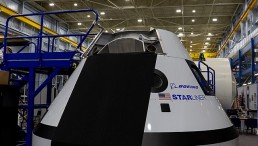ESA
Bouncing Philae Takes Award for Breakthrough of the Year
Comet 67P/Churyumov-Gerasimenko May Be In the Limelight, But It’s Still Very Gray
Strange Andromeda Transmission May be First Sign of Dark Matter
Comet 67P/Churyumov Gerasimenko Reveals Origins of Water May Not be From Comets
International Space Station Crewmembers Arrive, and Some Start With Tweets
Philae Lander Reveals Organic Molecules on Comet 67P
As Time Runs Out for Philae, ESA Gathers Data
Philae Lander Takes a Nap, As ESA Fights Against the Clock
Comet Siding Spring Captured by ISRO’s Mars Orbiter
Siding Springs Comet Came in Close For a Martian Meteor Shower
ESA Ready to Give Rosetta’s Philae the Green Light
‘G2’ Gas Ball Survives Black Hole, and Researchers Say They Now Know Why
Antares Rocket Launches on East Coast Tonight: Viewing and Live Stream Info
Watch the Antares Rocket Launch Tonight: Start Time, Live Stream Info
Most Popular

Mastering Lost Wax Casting: A Comprehensive Guide to Precision Prototype Creation

Alexander the Great's Bathroom From 2,300 Years Ago Where Young Ruler Could Have Bathed With Companion Discovered by Archaeologists in Royal City of Aigai

Meet Goldene: The Free-Standing Sheet of Gold Only One Atom Thick

Prey Playing Dead? Dice Snake Fakes Death Using Bloody, Gory Tactics To Avoid Getting Eaten by Predators, Study Reveals

![Venus Lost Water and Dried Out Due to Chemical Reaction HCO+ Dissociative Recombination [Study]](https://1721181113.rsc.cdn77.org/data/thumbs/full/53493/258/146/50/40/venus-lost-water-and-dried-out-due-to-chemical-reaction-hco-dissociative-recombination-study.jpeg)



